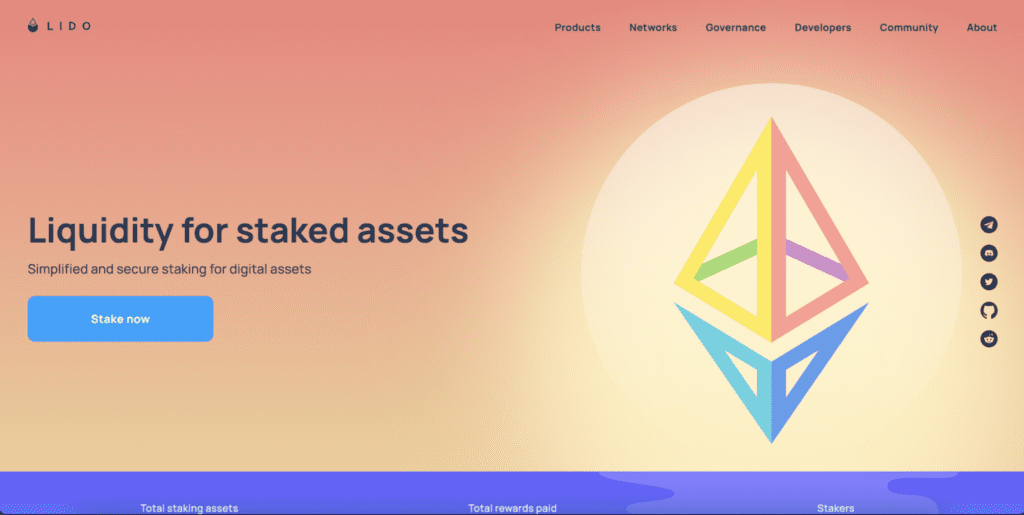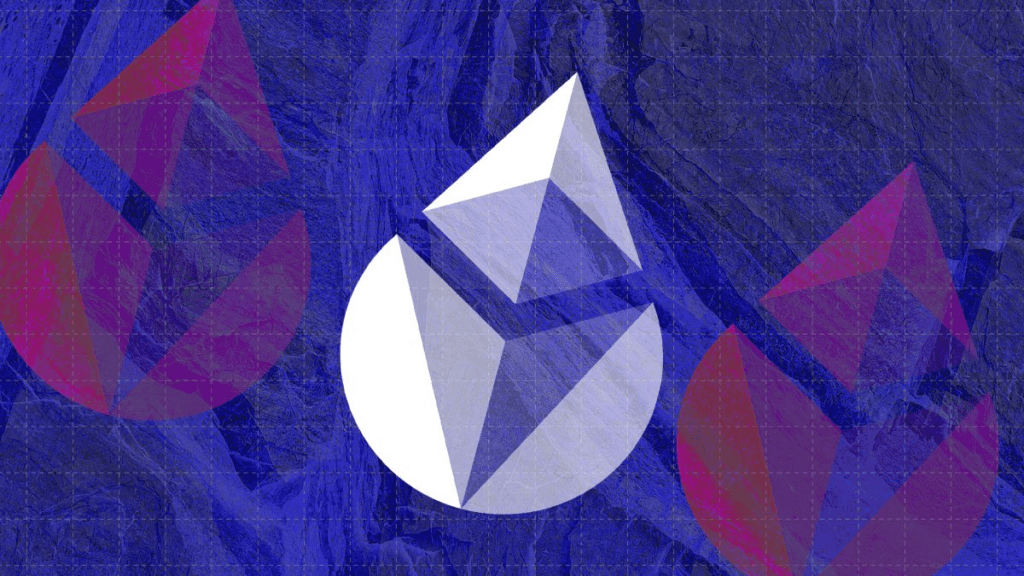Today’s article will share with you what you need to know about Lido Finance so that we can see its role in the development of Ethereum 2.0 in particular and defi in general. So what problem can Lido Finance solve?
In the context of DeFi growing, users are increasingly aiming to use capital more efficiently, so Lido DAO is facing an extremely large demand from the investment community.
What is Lido Finance?

According to its website, Lido is a liquid staking solution for staking providers backed by ETH. Lido allows users to stake their ETH – without pegs the assets or maintaining the infrastructure – while participating in on-chain activities, such as lending. Lido tries to solve the problems associated with previous ETH staking such as illiquidity, immobility, and accessibility.
When using Lido to staking ETH on the Ethereum token chain, users will receive a token (stETH) representing their ETH on the Ethereum token chain in a 1:1 ratio. It effectively acts as a bridge to bring staking rewards from ETH 2.0 to ETH 1.0.
As user staking ETH generates staking rewards from ETH 2.0, the user’s ETH balance on the beacon chain will increase. The stETH balance will be updated accordingly once a day, giving you access to the value of the stake rewards you received on ETH 2.0 on ETH 1.0.
Users can use stETH in all of the same ways as ETH: sell, use, and since it is DeFi-compatible, it can be used as collateral for on-chain lending. Once transactions are enabled on ETH 2.0, users can also exchange stETH for ETH.
How does Lido Finance work?
As mentioned above, becoming a validator of Ethereum 2.0 requires users to have large capital. The technical complexity around the authentication process and the extended lock time. Ordinary ETH holders lack professionalism as validators and do not want their assets to lose liquidity after staking. Therefore, Lido Finance – a liquid staking service protocol, was born to solve these problems.
Lido Finance allows users to deposit their ETH into the protocol, then delegate the staked ETH to professional validators (aka node miners). At the same time, after staking ETH into Lido Finance, users will receive a derivative asset – stETH issued by Lido Finance, representing ownership of staked ETH.
After node operators receive the staked ETH entrusted by Lido Finance, it will be used to validate Ethereum 2.0 transactions. Node operators receive ETH rewards (staking rewards) for validating transactions. After deducting the fees for node operators and Lido’s staking pool service fees, the rest of these rewards will accrue to the user’s staked ETH.
What is Lido DAO and LDO?

To have voting rights in Lido DAO, one must hold LDO governance tokens.
LDO is an Ethereum token that provides administrative privileges in the Lido DAO. Lido DAO manages a family of liquidity staking protocols, defines key parameters (e.g. fees) and performs protocol upgrades to ensure efficiency and resilience. By maintaining the LDO token, one is granted the privilege of voting in the Lido DAO. The more LDOs peg in a user’s voting agreement, the more important the decision-making power that voters gain.
Features of Lido DAO
Staking ETH and keeping user tokens liquid

Users who send Ether to the smart contract will receive stETH tokens. You will earn rewards every day from these tokens. From there, you can use them at any time to buy, sell, exchange or invest in DeFi projects.
Unlimited number of ETH bets
As mentioned above, ETH2.0 only allows staking of a multiple of 32 ETH. Lido has a more flexible and user-friendly solution than self-staking. With Lido, you can stake any number of tokens you own and earn rewards even if the stake is not large.
Supporting DeFi projects with stETH
The stETH token is a Liquid staking of Ethereum tokens on Lido that acts as a block for new Ethereum apps and protocols. For example, you can use it as collateral for loan services or other transactional DeFi solutions.
What problem does Lido DAO solve
In the future when Ethereum is expected to launch ETH2.0 and start the transition from Proof of work (PoW) to Proof of stake (PoS) network according to the outlined roadmap. The number of assets participating in staking in the Ethereum 2.0 contract has surpassed 3 million ETH, which speaks to the large demand of users in using their assets to generate more profits.
But besides that, staking on ETH2.0 is entangled with some quite difficult problems such as:
- It is almost impossible for the “Early birds” to earn the “fat worms” because as soon as they are staked their ETH will be locked until transactions are activated on ETH2.0. That means it can take months or even years. This is not what any staker wants.
- Besides, ETH will not be tradable or collateralized when users stake it, so ETH stakes will be illiquid.
- The last and the biggest problem is that users can only stake an amount equal to multiples of 32, which is quite troublesome as those with 10 or 20 ETH won’t be able to stake it, while those with 10 or 20 ETH will not be able to stake. If you own 45 ETH, you can only stake 32ETH.
Some risks may occur when staking on Lido Finance

It can be said that Lido Finance offers an effective staking solution, optimizing the use of users’ capital. However, that doesn’t mean everything with Lido is really safe. There will always be potential risks such as:
- One is that as is the case with any protocol on the Ethereum blockchain, Lido faces potential smart contract vulnerabilities (errors and hacks, for example). To mitigate this risk, Lido’s smart contracts must undergo one, or even more, regular security audits to find, detect, evaluate, and resolve security issues.
- Second, the nature of users using Lido Finance is that they staking their ETH into Ethereum 2.0. In the past, many times this has been pushed back to need more time for the conversion. That means the longer Ethereum 2.0 goes back, the longer the amount of ETH staking will be and vice versa. During that time, users will not be able to withdraw their previously staked ETH.
- Third, users may be at risk from the validators that they deposit ETH on Lido Finance. If that asset validator goes offline for a long time, users may eventually lose these funds. Lido Finance has bets on several reputable validators and also offers up to 5% coverage for this matter.
Conclusion
Lido has a leading edge in decentralized staking. It currently has a 10% share of the Ethereum staking market and ranks 11th in terms of TVL among all Defi protocols, almost overtaking Sushiswap.
Thanks to solutions like Lido Finance, the entry barrier for staking ETH is much lower, while maintaining decentralization and supporting control of users’ own assets. The liquid staking model can be considered the purest form of DeFi, so we can see it grow in tandem with DeFi in general.
However, from another perspective, Lido Finance itself may bring potential dangers to networks, especially Ethereum. Converging too much ETH into one place inadvertently makes the network more centralized. Some argue that Lido should not have more than 25% of the total bet.
But with the further development of Ethereum 2.0, more and more people are getting involved in decentralized ETH staking. The massive network effect of stETH will make Lido the most profitable project on this track.
DISCLAIMER: The Information on this website is provided as general market commentary and does not constitute investment advice. We encourage you to do your own research before investing.
Join us to keep track of news: https://linktr.ee/coincu
Website: coincu.com
Foxy
Coincu News






















